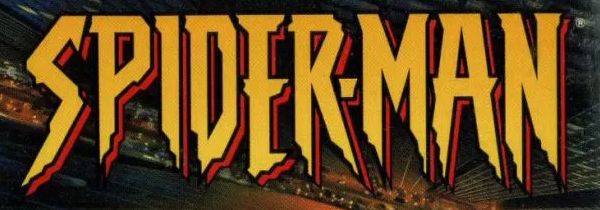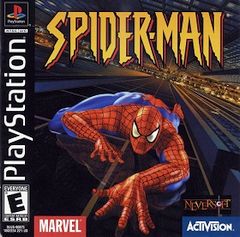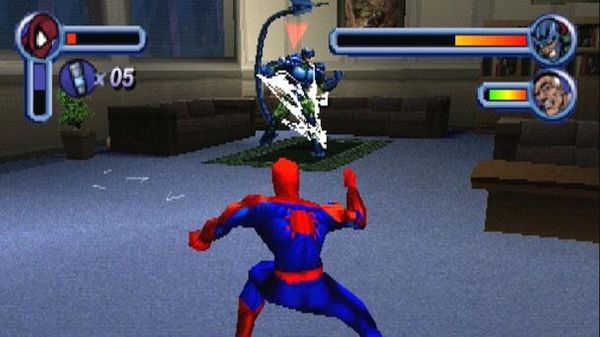
The tail-end of the 90s wasn’t a great time for superhero games. With the likes of Superman 64, Batman Beyond: Return of the Joker, and Spawn: The Eternal clogging store shelves, the average comic geek had few options for playable superheroics. That is, until Neversoft and Activision took it upon themselves to create one of the best comic book-based games of all time: Spider-Man!
Okay, so the title is lazy — but it also set the expectation that gamers could finally become Spider-Man like no previous video game could achieve. Launching in 2000 for the Sony PlayStation (with ports appearing over the next 12 months on the Nintendo 64, Dreamcast, and PC), this game oozed authenticity from minute one. From the very beginning, we were living an adventure narrated by Stan Lee, hanging out with the acrobatic Black Cat, swinging by the famous Baxter Building (home of the Fantastic Four), and putting an end to a daring bank robbery.
It was, quite frankly, a revelation. Suddenly, superhero games didn’t have to be cheap cash-ins like all of those terrible movie-based atrocities. There were a few pioneers on earlier consoles, to be sure — Batman on NES and Spider-Man and Venom: Maximum Carnage for SNES/Sega Genesis come to mind — but this gem captured my imagination like no other. However, does it hold up to those sugary-sweet memories in these darker modern times?
 Hell. Yes. Look, nostalgia certainly plays a role in this to some degree — this game was a rare bright spot in my childhood — but that can only carry something so far. Firing this sucker up for the first time in several years, its clunky third-person platforming caught me a bit off guard, especially as it lacks any sort of camera control. The camera stays behind Spidey’s back at all times, and that definitely takes some getting used to… but it isn’t bad.
Hell. Yes. Look, nostalgia certainly plays a role in this to some degree — this game was a rare bright spot in my childhood — but that can only carry something so far. Firing this sucker up for the first time in several years, its clunky third-person platforming caught me a bit off guard, especially as it lacks any sort of camera control. The camera stays behind Spidey’s back at all times, and that definitely takes some getting used to… but it isn’t bad.
If anything, it was user error that made the early hours of my recent playthrough a bit disappointing. The combat mechanics seemed overly simplistic, much like early brawlers such as the aforementioned Maximum Carnage, consisting of a basic punch, kick, and a web to subdue foes. A voice in the back of my mind insisted I was missing something, but the first level’s numerous tutorials would surely have clued me in. It was only after I entered the sewers and was instantly trounced by persistent waves of lizardmen that I reached for the game’s instruction booklet (remember those?!) and discovered my folly.
Clearly, I underestimated Spider-Man. There were tons of additional moves at my disposal, activated by quick button combinations like you’d find in most fighting games. In addition to useful grabs and throws, Spidey can make use of several web attacks. He can cover himself in a protective dome before exploding out of it, encase his hands in spiked webs, and tether enemies to a web line before yanking them left, right, or over his shoulder. As you may imagine, these extra combat techniques significantly ramped up the fun.
But there is more to this game than the combat. There’s some decent gameplay variety here, and some of it even resembles more modern favorites. For example, the opening bank heist feels like an older, more archaic predator encounter from Batman: Arkham Asylum. Armed criminals have taken bank employees hostage, and it’s up to Spider-Man to take each goon down silently from the walls and ceilings before moving on. Some of the chase sequences also feel like the Sega Dreamcast’s Sonic Adventure, as Spidey flees from police helicopters or other foes while the camera occasionally moves in front of him, hiding oncoming obstacles. Sometimes Spider-man even gets to be the pursuer, swinging through the New York City skyline in an attempt to catch a fleeing villain. In quieter moments, the game even becomes a simple platformer in between more action-oriented set pieces.
While the initial story mode can be completed in a handful of hours, there are tons of unlockables. This game just may boast the largest selection of bonus costumes I’ve ever seen in a video game, offering everything from the briefly-used Amazing Bagman duds, to the futuristic Spider-Man 2099. Several suits feature unique abilities as well, like the Symbiote’s infinite webbing and Spider-Man Unlimited’s invisibility. More than that, the special What If? mode gives plenty of incentives for replaying the game, adding extra mini-games, new rooms, different dialogue, and even more Marvel character cameos.

Alas, the graphics have aged terribly, as is the case with any other 3D PlayStation game. Character models are blocky and lifeless (with meatballs for hands, no less), and the environmental textures are as bland as they get. That leads to the game looking like a visual abomination, but the excellent sound design balances out those negatives. With some tremendous voice talent from both 90s Spider-Man animated series, and a kick-ass soundtrack by Tommy Tallarico, your ears will sing the game’s praises even while your eyes bleed. If Black Cat’s terrifying face is too much for you to bear, the Sega Dreamcast port released the following year has considerably improved graphics, making it the preferred version for some gamers.
For my money, this is still one of the best superhero games released to date, and ranks quite high even amongst later Spider-Man games. The movie-based Spider-Man 2 receives unending praise for its open-world gameplay, but I’ve always preferred the more linear, level-oriented precedent set by this title. Its legacy lives on in similarly structured games like Spider-Man: Friend or Foe, Spider-Man: Shattered Dimensions, and Spider-Man: Edge of Time… all enjoyable to some degree, but lacking the charm of this classic video game.
Excelsior!







